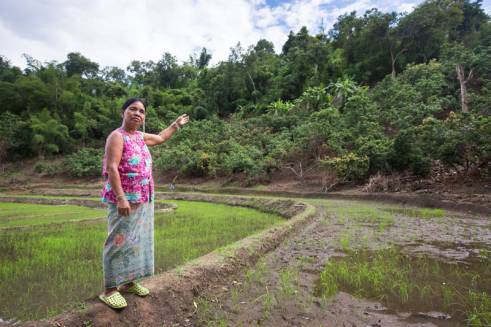By Beth Howgate
We’re launching the first Disaster Risk and Age Index at the Third UN World Conference on Disaster Risk Reduction in Sendai, 14-18 March. The Index ranks 190 countries across the world on the disaster risk faced by older people.
“The Disaster Risk and Age Index captures the collision of two trends: ageing populations and the acceleration of risk in a world which is increasingly exposed to natural and technological hazards,” said Margareta Wahlström, Special Representative of the UN Secretary-General for Disaster Risk Reduction.
Highest and lowest levels of disaster risk
Overall, older people in Somalia, Central African Republic and Afghanistan face the highest risk. This is in part due to ongoing conflict, coupled with the lack of services provided for older men and women.
For example, in the Central African Republic there are only 0.5 doctors per 10,000 people. There is no pension coverage, low life expectancy at 60 and high numbers of older displaced people.
Older people in Malta and Finland are exposed to the lowest risk from disasters.
Older people disproportionately affected by disasters
In the Japanese Tsunami of 2011, 56% of those who died were aged 65 and over. This is despite this age group comprising just 23% of the population. Similarly, 75% of those who died in Hurricane Katrina in the US in 2005 were aged 60 or over, although only 16% of the local population were aged 60 or over.
The Disaster Risk and Age Index report provides and in-depth analysis of the South and East Asia region. This region has some of the highest disaster and climate change related risks, coupled with the fastest ageing populations.
For example, in Vietnam, there will be a 61.4% increase in the proportion of people aged 60 and over between 2010 and 2030.
Global ageing
66% of the world’s over 60s live in less developed regions. By 2050, this is projected to rise to 79%. The world’s population of older people is expected to rise to 2.02 billion by 2050.
“It is a sign of resilience that there will be this many older people in the world by 2050. But it is the unprecedented rate at which populations are ageing, alongside the increasing frequency of disasters, that presents policy makers with a challenge,” said Toby Porter, HelpAge’s Chief Executive.
“We need to collect data disaggregated by sex, age and disability to demonstrate the impact of disasters on older people. This will help us to develop appropriate strategies in order to save lives.”
A study we carried out in 2013 on humanitarian financing, found that only 1% of funded projects in 2012 targeted older people.
When older people are not considered in disaster risk reduction efforts, the responses are often inadequate and ill-informed, as older people are not engaged or consulted.
Older people contribute to disaster risk reduction
“Older people are often seen as passive recipients of aid rather than active participants in disaster risk reduction activities. They often get overlooked,” said Godfred Paul, Senior Regional Programme Manager for HelpAge in East Asia Pacific.
Older people can be real champions for disaster risk reduction at the local level. In 2012, following training on disaster risk reduction, older people in Pakistan noticed the colour of the local river changing. They then contacted disaster management authorities to tell them about the early warning sign.
The imminent flooding was confirmed and the community began diverting the water with digging equipment. Because of their actions, 50% of the water was diverted away from the villages when the flooding occurred.
A pledge to include older people in disaster risk reduction
Charter 14 is a 14 point declaration pledging to include older people in disaster risk reduction efforts.
We are urging governments, NGOs and civil society organisations to sign up.
Find out more about Charter 14 and how your government can get involved.
Third UN World Conference on Disaster Risk Reduction
The Third UN World Conference on Disaster Risk Reduction takes place in Sendai, Japan from 14-18 March 2015.
The conference will result in a concise, focused, forward-looking, and action-oriented International Strategy for Disaster Reduction.
HelpAge will be participating in the conference to ensure the needs, contributions and voices of older people affected by disasters are heard and acted upon within the new framework.
You can follow the events of the week on Twitter with #WCDRR.
